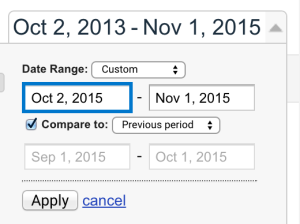“The money is in your list”
If you’re marketing yourself or your business online, you’ve probably heard this saying by now.
Your list is your database of prospective customers and qualified leads.
And, the bigger your list, the better your sales prospects.
Today I am going to show you exactly how to grow your list, quickly and ethically.
Why Grow Your Email List?
More Control:
In addition to building trust with your qualified leads, your very own list gives you more control over how and when you market to your prospects.
So, when social media sites like Facebook change their algorithm so the people who like your page can no longer see your posts, you have a backup plan to get in touch with your community.
Marketing To Older Consumers:
Many people prefer to receive communications from companies via email.
By adding email marketing to your toolbox, you ensure you’re communicating with your prospects and customers the way they want to hear from you.
More Cost Effective:
It’s a lot easier to market to people who are already on your list than try to market to people who don’t know you at all.
Your list is made up of warm leads as opposed to cold leads..
How to grow your email marketing list?
Step One: Identify your target market.
Know your audience and what their pain points are.
Step Two: Create a freebie offer.
By creating a freebie offer, you’re creating an ethical bribe or a lead magnet.
You’re going to trade your prospects a free copy of whatever you’re about to create in exchange for their email address.
It goes without saying that your freebie needs to be irresistible for people to give up their email address.
Tips to creating a freebie offer:
Put yourself in the shoes of your customer when they are shopping for what you sell.
- What questions do they have?
- What objections do they have?
- What should they be looking for when they’re comparing providers?
- What maintenance costs should they be aware of?
- What do they need to prepare for before they buy?
Spend some time with these questions and answer each one.
The answers you provide are a first draft of your freebie.
From there you can flesh your freebie out a little bit more.
Take what you’ve written, and add a cover page and an “About the Author” page.
The next thing you know, you’ve got a three-page document that’s a valuable resource for your prospects!
You can call this document an ebook, a report, a whitepaper, a freebie, a guide or a download.
Spend some time on creating a headline that piques curiosity, some examples are:
- 10 Steps To No Regrets: How to choose an internet marketing company
- How To Get The Best Deal When You’re Shopping For A Lawnmower
- The 7 Things Your Website Must Do to Be Worth Your Money
Step Three: Collect Email addresses.
So once you have your freebie or your guide created, then what?
Well, you’ll need to get an email marketing software that provides you with a Sign Up Form you can add to your website.
I like MailChimp.com.
They’ve got a really easy way set it up.
As soon as someone gives you their email address, they get the freebie in their email newsletter box automatically.
(HINT: Ding what you said you would is a great way to build trust with folks that you are trying to sell to. )
So, the heading above your signup form should be worded something like:
Get Your Free Copy Of the Report Instantly (title of the report) when you subscribe to our newsletter.
Spend some time on this heading, so as to make your freebie IRRESISTIBLE
Please note: If you’re based in Canada, this practice will also cover your bases with the Canadian Anti Spam Act, as the prospect has actively given you permission to market to them via email.
That’s it! Those are your 3 easy steps to growing your email list ethically!
Bonus Tip: The Follow Up Sequence.
To be effective in converting your list members to customers, you need to have a follow-up sequence.
Be sure to send out emails to your list of qualified prospects on a regular basis.
But remember, you want to provide value and not spam your list.
The general rule of thumb is for every ten or eight emails you send, one can be selling.
If you found this video helpful, please like it and consider sharing with your network.






 Ideally, this is going to be diversified, showing traffic from:
Ideally, this is going to be diversified, showing traffic from:
 Again, if you’re promoting a particular page, say, using Google Adwords, or promoting a specific page by posting your blog posts to social networks, you can see what pages are working and which ones aren’t.
Again, if you’re promoting a particular page, say, using Google Adwords, or promoting a specific page by posting your blog posts to social networks, you can see what pages are working and which ones aren’t.

 If you’re wondering how to drive traffic to your website, then keep reading!
If you’re wondering how to drive traffic to your website, then keep reading!









